Color in a Shaded Landscape
I have a 37-year track record of gardening beneath mature pecan trees, so on the subject of finding color for shade, I’m a veteran. But before we start, remember that color doesn’t come only from flowers – it can be from foliage and even from fruit.
Shade Annuals
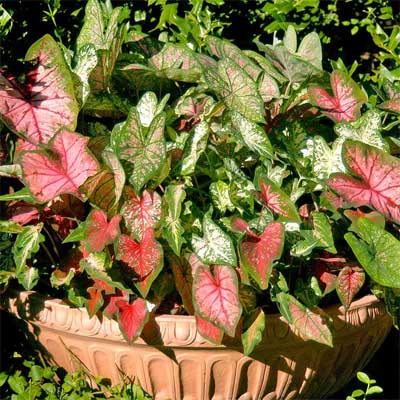
• Caladiums. These are the most popular source of colorful foliage in the South. Their large, heart- or spear-shaped leaves come in exotic mixes of red, pink, green and white. They’re grown from tubers or transplants.
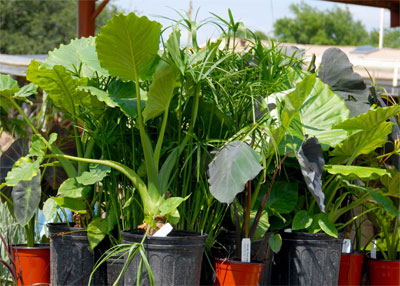
• Elephant ears (Colocasias). You’re familiar with the standard green types, but have you tried the purple-leafed, ultimately tropical-looking selections? Keep them moist.
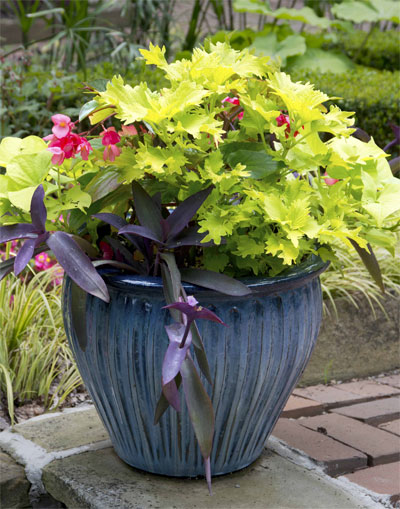
• Coleus. These are my “hero” plants. I’ve grown them each summer since I was a teen, and I always go to the cutting-grown types that have been selected because they’re slow to produce flowers. (Flowers shut coleus growth down.)
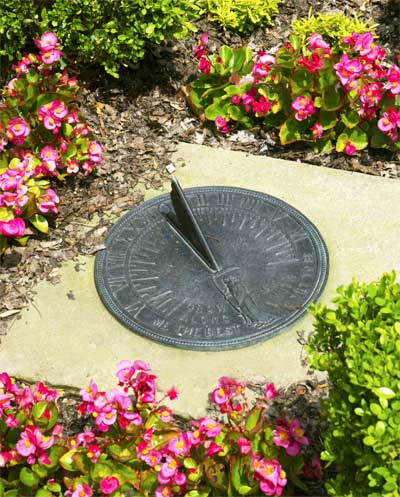
• Wax begonias. These really need shade, but you’ll see a lot of people pushing them out into the sun. Give the green-leafed types a chance in a shade garden, and you’ll be pleased with the results. Bronze types tolerate a little more sun.
• Dragon Wing begonias. These hybrids have larger, lush green leaves and larger flowers than wax begonias. They’re terrific in patio pots, also planted directly into shady beds. They grow to 15 inches tall.
• Impatiens. More types that keep blooming during summer’s hot weather have come into the marketplace. These offer many cooling colors, and they’re good in pots, hanging baskets and beds. The newer Sunpatiens group is more resistant to downy mildew, a serious disease with impatiens.
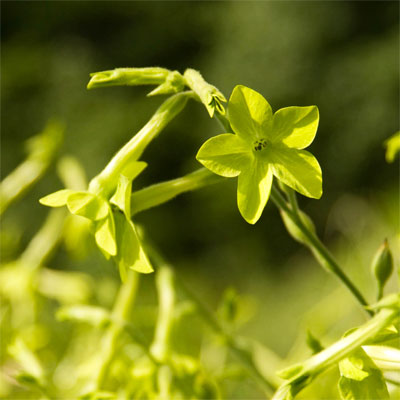
• Nicotiana. Flowering tobacco isn’t common, but it’s handsome. It blooms in red, pink and white, and there’s even a lime green-flowering type. Heights range from 12 to 36 inches, depending on the variety.
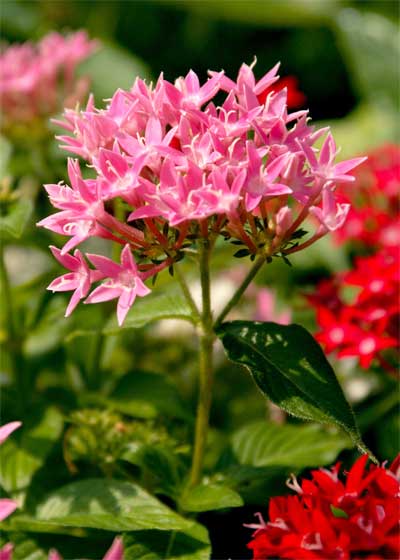
• Pentas. Technically, these long-flowering plants need a few hours of morning sun and then shade the rest of the day, but you probably have a setting like that. If so, you’ll love them.
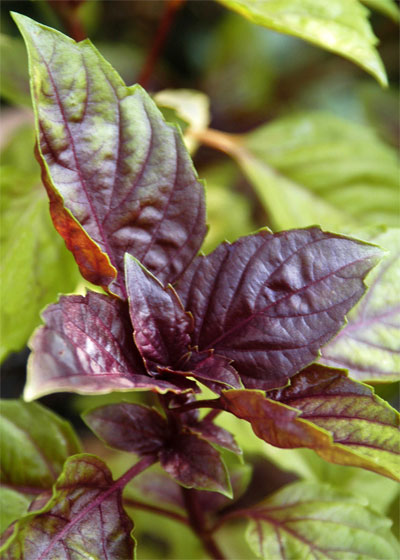
• Purple basil. Again, this plant is good in nearly full sun, but I use it for color, interest and flavor in my partially shaded garden as well. There are several varieties, from 12 to 20 inches tall.
Shade Perennials
• Violets. They’re not especially showy, but violets are incredibly fragrant. The plants are short (to 10 inches), and the flowers are borne among the leaves, so you’re more likely to smell them than to see them.
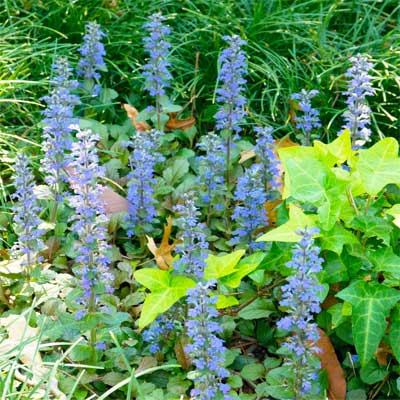
• Ajuga. If rich blue is your color, this is your plant. It blooms in early spring, and then the plants spread and sprawl to become a nice small-space groundcover. Variegated types are also available.
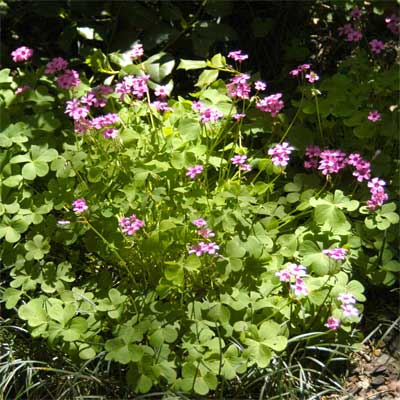
• Oxalis. One of our longest-proven Texas perennials, this little clover-like flower blooms in spring and again in the fall. The medium-pink type is most common, but a white-flowering form is also sold. You’ll also see a red-leafed variety that makes a stunning bed border.
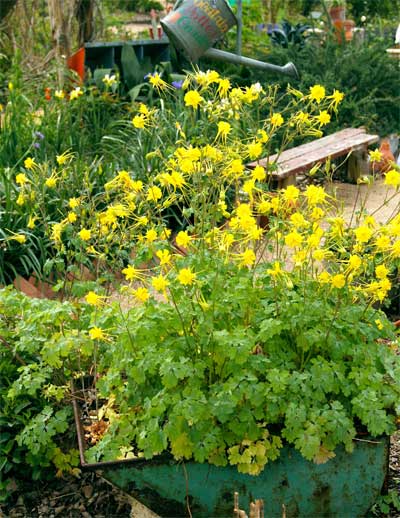
• Texas Gold columbine. Not many columbines thrive in North Texas gardens, but this one does, and it’s great. It grows to 22 inches tall, and its mid-spring blooms are showy soft yellow. The plants come back for several years, but they also reseed quite freely.
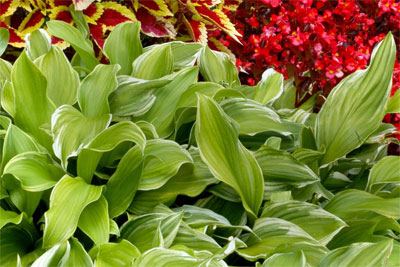
• Hostas. If you’ve ever lived in the North or Midwest, you know hostas well. We in Texas are just learning about them. There are hundreds of varieties, but southern gardeners need to stick with the small-leafed types. Give them rich, moist soil and shade all day long.
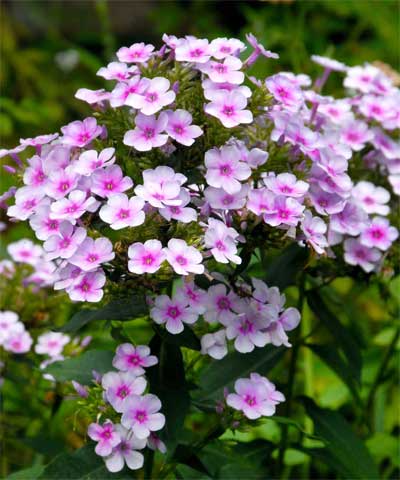
• Summer phlox. Visit old neighborhoods during the summer, and you’ll see this venerable old plant growing and blooming to profusion. The common rosy-red form is well adapted, as is a selection from San Antonio named ‘John Fanick’ summer phlox.
• Purpleheart. Related to wandering jew, purpleheart is actually a hardy groundcover. It grows to 12 inches tall. Although it freezes to the ground each winter, it comes back up every spring.
